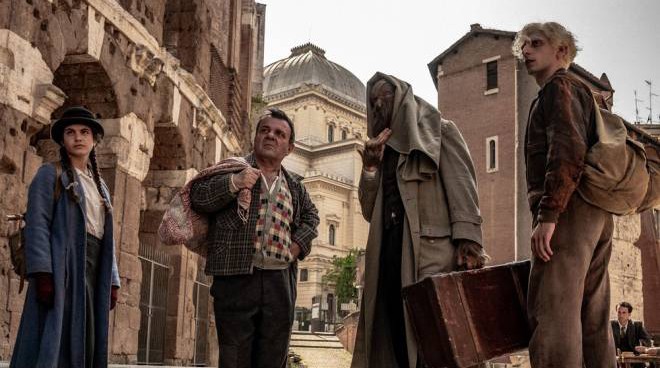Pamfir
Pamfir is not only one of the most unique films from contemporary ukrainan cinema, it is also one of the best ones, and the single best east european film that premiered at Cannes this year. Dmyttro Sukholytkyi-Sobchuk worthfully takes his place next to László Nemes and Kantemir Balagov as one of the most distinct emerging voices in east european cinema.
By setting the film in western Ukraine, Dmyttro Sukholytkyi-Sobchuk already estabilishes an innovation when compared to the other contemporary films from his country, a national cinema that has been mostly - rightfully - concerned with the difficult conflict and the persistent military confrontation for the past decade. Instead, Pamfir looks back at the roots of the Ukrainan identity, bringing to the scene a fatalist man oppressed by his time. The allusions to greek tragedy and the impossibility to escape fate further enrich this idea. Additionally, the daringly colourful cinematography by Mykyta Kuzmenko, reminiscent of expressionist paintings, and the dinamicity of the long takes contrasts with the static, grounded and purposefully monotonous aesthetic developed by most ukrainan filmmakers such as Vasyanovich or Loznitsa.
The tragedy of Leonid, nicknamed "Pamfir", who returns home for the pagan traditional malanka festival and struggles to help his family can be best descrived as a medieval heroic ballad set in the contemporary age. Leonid himself appears as a modern rendition of a cossack, his deeds often have an epic-heroic subtone, the historical backdrop of the Malanka - afestivity that sees everyone wearing paganic masks and outfits and enact dances and fights - provides a direct connection between past and present, thus providing a sense of timelessness.
The bonds with paganism further continue in some of the habits of the main character, which have either a ritualised or supernatural element to them. In Pamfir's difficult relationship to the church one can identify the uneasy imbalance between paganism and christianity, in his quarrel with a local gangster, a feud between a medieval warrior and a lord. Even his use of drugs seems to have a ritualistic connotation.
His nickname Pamfir, borrowed from his grandfather - with whom the main character shares similarities hints at an idea of continuous reincarnation, with the name being passed on throughout generations and with it the soul of the original man.
Impossible to classify in a specific genre, spacing from crime to magic realism to coming-of-age, Pamfir is also a most entertaining film, without action and entertainment ever overshadowing content. Very few filmmakers have been able to achieve what Sukholytkyi-Sobchuk has achieved in his very debut film in this sense: Pamfir is a genuinely exciting film in a way very few films from east europe have been in recent years, yet it is also dense of content, allusions and details, which somehow never make the narrative heavier.
Pamfir had all the reasons to win the Camera D'Or for best directorial debut, and none are related to its country of origin. Hopefully Pamfir will obtain the just recognition in time, but it is already one of the best films of the year.



Comments
Post a Comment